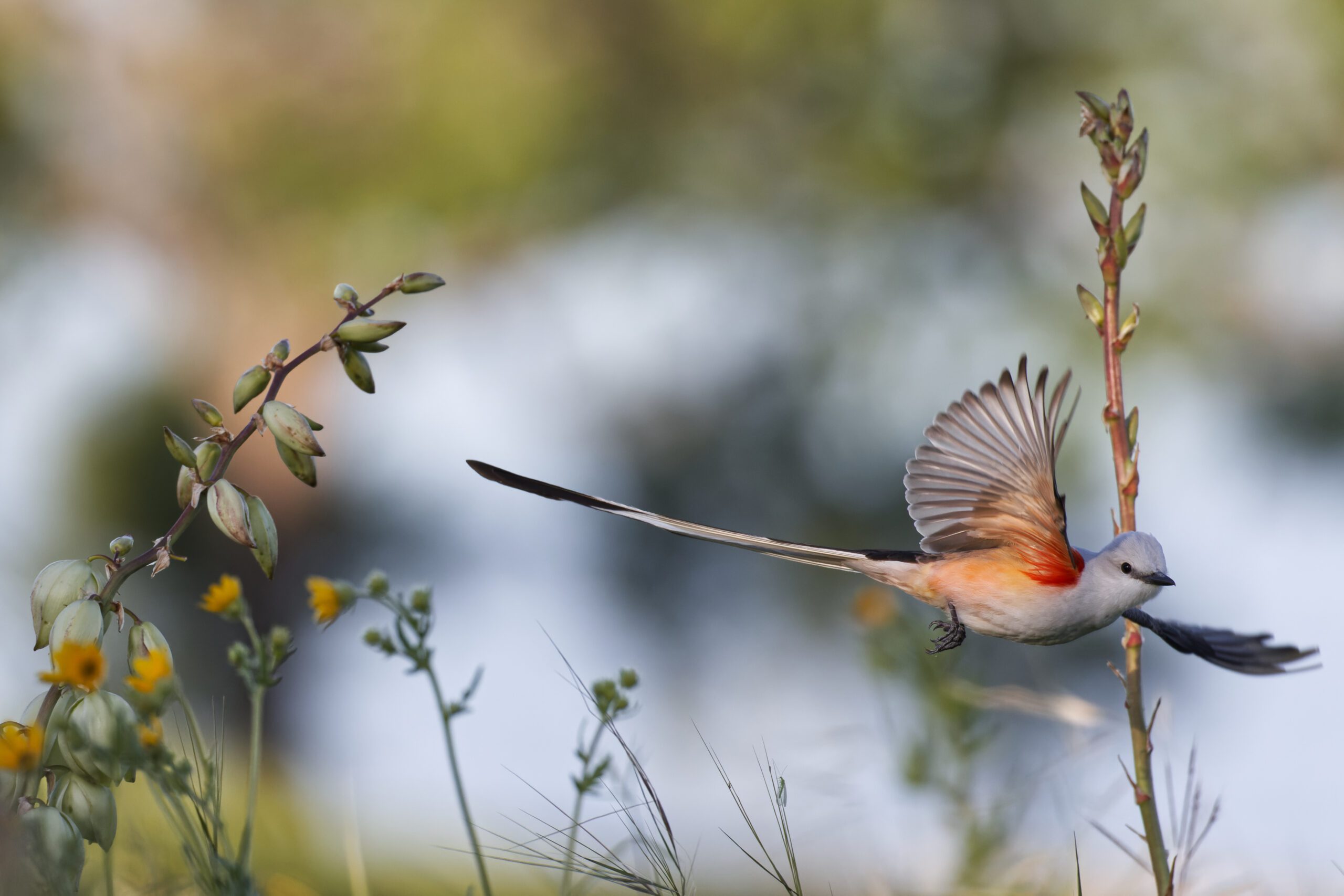Have you ever wondered which bird represents the spirit of Oklahoma? Knowing your state bird isn’t just about facts—it’s about connecting with the land and its unique charm.
You’ll discover the fascinating story behind Oklahoma’s state bird, why it was chosen, and what makes it so special. Keep reading to uncover how this bird reflects the heart of Oklahoma and what it can teach you about the state’s natural beauty.

Credit: www.facebook.com
Oklahoma’s State Bird
The state bird of Oklahoma is the Scissor-tailed Flycatcher. It is known for its long, forked tailthat looks like scissors. The bird is mostly gray with white underparts and black wing tips. It has a unique way of flying, often gliding and flipping in the air. This bird is very common in Oklahoma’s open fields and roadsides.
The Scissor-tailed Flycatcher eats mainly insects. It catches them mid-air with quick, sharp movements. Its long tail helps it balance and turn fast while flying.
- Scientific name: Tyrannus forficatus
- Tail length: up to 9.5 inches
- Habitat: open areas, farms, and grasslands
- Colors: gray, white, black, and pink on tail

Credit: okmag.com
Physical Traits
The Oklahoma state bird is the Scissor-tailed Flycatcher. It has a medium sizewith a slender body. The bird’s most unique feature is its very long tail, which looks like scissors.
Its body length is about 12 inches, and the tail takes up almost half of this length. The wings are long and pointed.
- Color:Mainly light gray on the back and head.
- Underparts:White with a pinkish wash on the sides.
- Markings:Black wings with white patches.
The tail is forked and black-and-white, making it easy to spot. This bird also has a small, sharp beak. It uses its tail for balance while flying and catching insects.
Habitat And Range
The Oklahoma state bird prefers open woodlandsand grasslands. It often lives near riversand fields. These environments offer plenty of food and safe spots for nesting.
Geographically, this bird is common across Oklahomaand nearby states. It thrives in the central United States, where the climate suits its needs. It adapts well to both rural and suburban areas.
Migration happens mostly in the fall and spring. Birds move to warmer southern places during winter. They return north to breed in warmer months. This pattern helps them find food all year.
Behavior And Diet
The scissor-tailed flycatcher loves insects. Grasshoppers are a favorite treat. It often catches bugs mid-air. Sometimes it eats berries and seeds. It hunts in open fields and parks. You might see it on fence posts looking for food.
Spring is nesting time. These birds build nests in trees or shrubs. They use twigs, leaves, and grass. Eggs are laid after nest building. Parents take turns keeping eggs warm. Baby birds hatch after two weeks. They learn to fly quickly.
The scissor-tailed flycatcher is very chatty. It makes chirping sounds. Sometimes it calls loudly. These sounds warn other birds. They also use calls to find mates. Listen for its song in sunny places.
Cultural Importance
The Scissor-tailed Flycatcheris a key symbol in Oklahoma. It shows the state’s spirit and natural beauty. This bird is known for its long tail and graceful flight.
It plays a big role in local traditions. People enjoy watching it during spring and summer. The bird is often seen in festivals and school events. It reminds Oklahomans of freedom and hope.
In art and media, the bird appears in many ways. It is featured in paintings, logos, and stories. This shows how much the bird means to the state. It helps keep Oklahoma’s culture alive and strong.

Credit: www.facebook.com
Conservation Status
The population of Oklahoma’s state bird has seen some changes over time. Efforts to track numbers show some decline in certain areas. This decline is often linked to habitat loss and environmental changes. Protecting the bird means understanding these shifts clearly.
Several threats challenge the survival of this bird. Loss of habitatdue to farming and city growth is a major issue. Pollution and climate changes also create problems. Predators and human activities add to the risks.
Protection efforts focus on keeping safe areas for the bird. Laws help stop hunting and protect land. Groups work to restore natural habitats and teach people why the bird matters. These efforts aim to keep the population steady and safe.
Frequently Asked Questions
What Is Oklahoma’s Official State Bird?
Oklahoma’s official state bird is the Scissor-tailed Flycatcher. It was designated in 1951 due to its unique tail and graceful flight.
Why Was The Scissor-tailed Flycatcher Chosen?
The bird was chosen for its distinct, long forked tail and elegant aerial acrobatics. It symbolizes Oklahoma’s natural beauty.
Where Can You Commonly See This Bird In Oklahoma?
The Scissor-tailed Flycatcher is commonly spotted in open fields, prairies, and highways throughout Oklahoma during spring and summer.
What Does The Scissor-tailed Flycatcher Eat?
This bird primarily eats insects, catching them mid-air. It also consumes small fruits and berries when available.
Conclusion
The Scissor-tailed Flycatcher is Oklahoma’s proud state bird. It stands out with its long tail and bright colors. People love watching it soar in the sky. This bird shows the beauty of Oklahoma’s nature. Knowing about it helps us appreciate local wildlife more.
Next time you see this bird, remember its special place in the state. It connects people to Oklahoma’s natural world. A simple bird, yet full of charm and grace.
